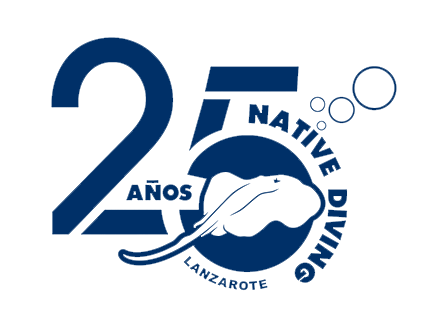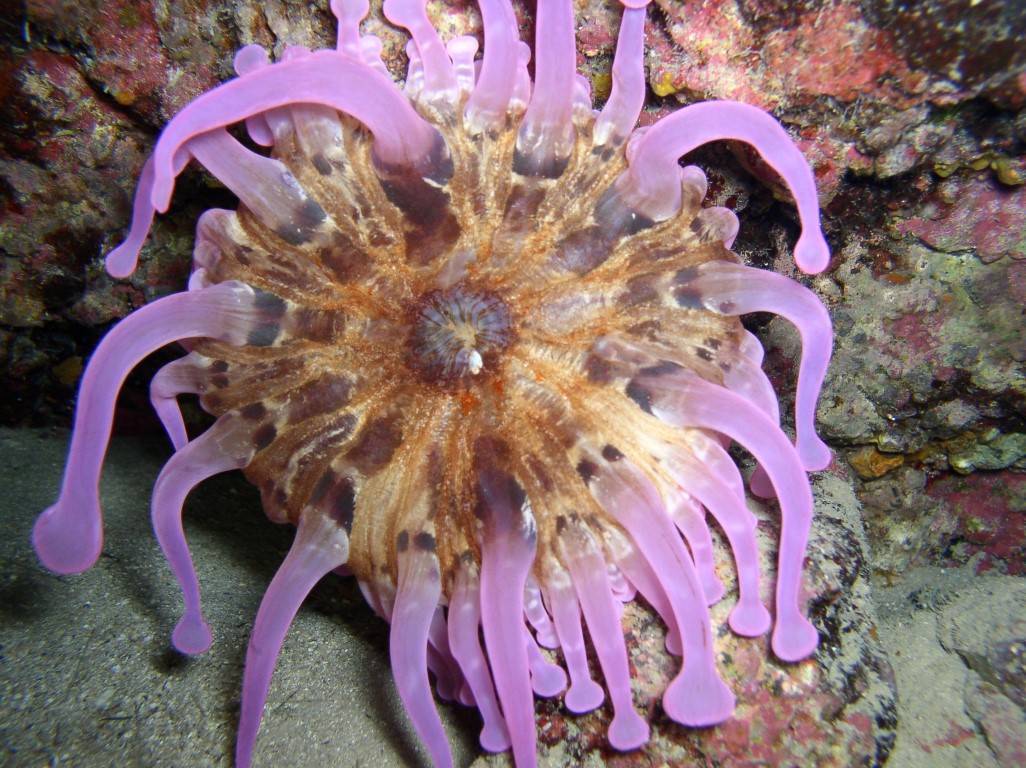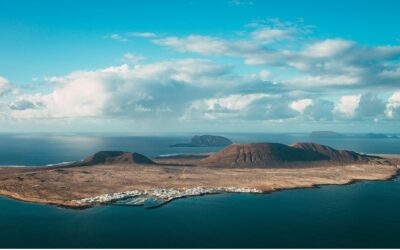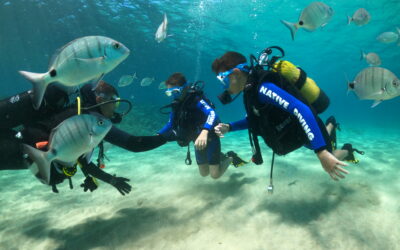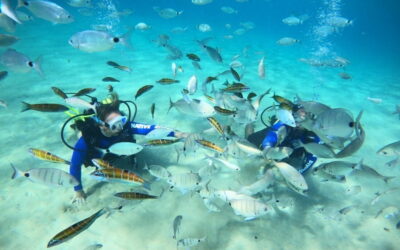The island of Lanzarote is not just volcanic land and sunny beaches: beneath its crystal-clear waters lies a vibrant, diverse marine world worth exploring. When you choose to dive or snorkel with a professional centre such as Native Diving (nativediving.com), you not only enjoy an experience, you become a guest of an ecosystem that deserves our respect and care.
What marine life can you find?
The waters around Lanzarote host significant biotic richness. A study led by the Instituto Español de Oceanografía (IEO) and other organisations identified more than 1,700 species in the marine space east and south of the island, many of them protected. old2.eurocean.org
Moreover, a recent report states that almost half of the 78 species of rays and sharks documented in the Canary Islands are at risk of extinction. canarianweekly.com
Among the species you might observe: tropical fish shoals, rays or mantas, moray eels, corals and volcanic formations covered in life. This environment makes diving or snorkelling especially compelling.
The 5 Must-Do Dives in Lanzarote: A Guide to Dive Sites and Marine Wildlife
Lanzarote is not just a paradise for beginners; it is also a world-class destination that challenges and amazes even the most experienced divers. The island’s volcanic geology has created an unparalleled underwater landscape where caves, lava formations, and shipwrecks combine with abundant and endemic marine life.
For those who already have their certification and want to explore the best the island has to offer, we have selected five dives that are mandatory stops. These spots cover a spectrum of experiences ranging from the artificial to the purely natural and geological.
1. The Atlantic Museum (Museo Atlántico) (Playa Blanca)
This dive is unique in Europe and, therefore, a mandatory stop.
- What it is: The Atlantic Museum is Europe’s first and only underwater art gallery, created by artist Jason deCaires Taylor. It consists of over 300 life-sized sculptures submerged at depths between 12 and 15 metres.
- What to see: Besides the striking figures that have become an artificial reef (such as the “Rubicón” or the “Raft of Lampedusa”), the dive is an observatory for marine life. It is common to see shoals of barracuda, rays, and angel sharks.
- Difficulty Level: Very easy/Intermediate. Its depth is perfect for Open Water divers.
2. The Wrecks of Puerto del Carmen (Puerto del Carmen)
For history enthusiasts and lovers of sunken structures, this dive is a treasure.
- What it is: This is a group of up to six shipwrecks near the port. The most popular is the “Telamón” (a large freighter), although most diving excursions focus on smaller, more accessible wrecks.
- What to see: These ships have been colonised by dense marine life. It’s common to find large schools of grunt, curious groupers, and, if you pay attention, numerous nudibranchs. The feeling of penetrating (for divers with the specialty) or simply circling these steel structures is impressive.
- Difficulty Level: Intermediate. Requires good buoyancy control, especially near the structures.
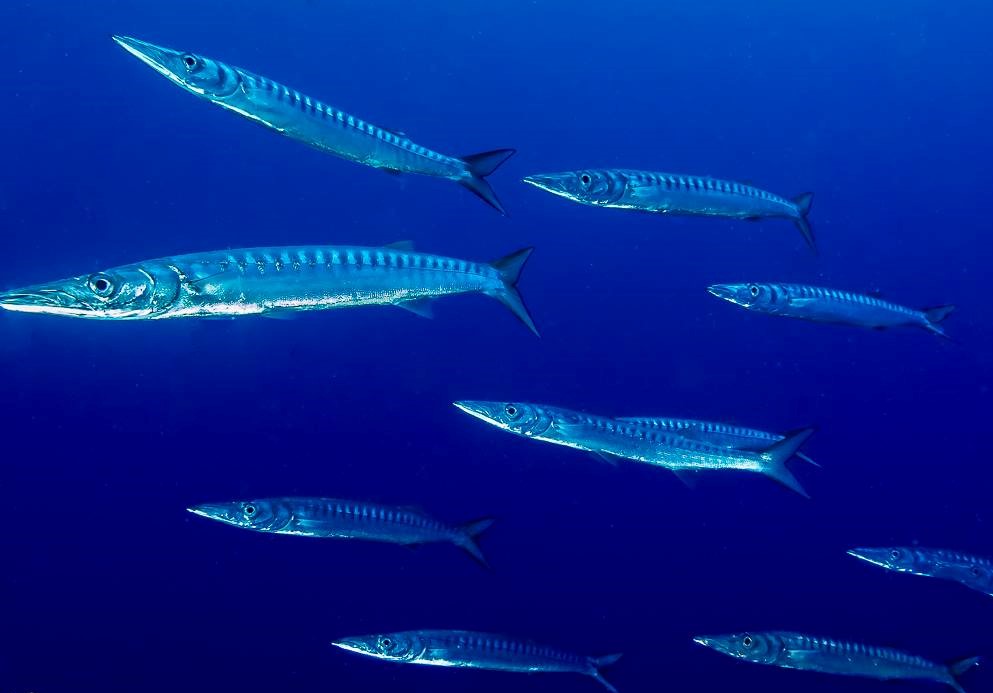
3. La Catedral (The Cathedral) (Playa Chica, Puerto del Carmen)
An emblematic dive that takes you into the island’s geological heart.
- What it is: A large underwater cave or volcanic chimney accessed from the famous Playa Chica. Its name comes from its impressive size and the way light filters through the openings.
- What to see: The main attraction is the geology. The cave descends up to 40 metres. Inside, marine life is abundant, with large groupers that have made the cave their home and approach divers curiously.
- Difficulty Level: Intermediate/Advanced. The depth and enclosed environment require good experience and, preferably, the cave diving specialty.
4. El Agujero Azul (The Blue Hole) (Playa Chica, Puerto del Carmen)
A photogenic gem, ideal for sensing the ocean’s vastness.
- What it is: A vertical volcanic tube that descends to about 25 metres. The dive allows entry through a tunnel and then ascending through this spectacular opening, where the contrast of the intense blue light is unforgettable.
- What to see: Besides the visual effect of the hole itself, diving in the adjacent area (known as the “Veril de Playa Chica”) is the preferred spot for encounters with large pelagic species, such as stingrays and, occasionally, hammerhead sharks (although this is a very rare sighting).
- Difficulty Level: Intermediate. Requires good buoyancy control and the ability to manage depth.
5. The Sand Mountains (Las Montañas de Arena) (Costa Teguise)
A treasure close to our centre, ideal for divers who appreciate small life and macrofauna.
- What it is: A dive site with a volcanic reef and sandy bottom, perfectly accessible for all levels, especially those staying in Costa Teguise. This is an area where Native Diving conducts many of its guided dives.
- What to see: This area is famous for being a nursery for life. It is one of the best spots on the island to sight the elusive and charismatic angel shark (Squatina squatina), an endangered shark species that uses these sandy bottoms for camouflage. It is also common to find large cuttlefish, octopuses, and various eagle rays.
- Difficulty Level: Easy/Intermediate. Ideal for a relaxing dive and macro photography enthusiasts.
Lanzarote offers an underwater universe as diverse as its lunar landscape on the surface. If you wish to experience these dives with expert guides who know every corner of the seabed, we invite you to plan your next diving adventure with the Native Diving team.
Best practices to help protect the environment
Being a responsible diver or snorkeller involves more than just submerging. Here are some recommendations:
- Do not touch or remove corals, gorgonians or fauna attached to the seabed: these are organisms that regenerate slowly.
- Maintain good buoyancy: avoid fin kicks hitting the bottom or placing weight on it.
- Do not feed marine animals: it alters their behaviour and the natural balance.
- Use eco-friendly sunscreen, free of harmful chemical filters, since these can impact marine ecosystems.
- Collect any litter or avoid letting anything drop into the water: this aligns with citizen science efforts already active in the Canaries. CEAB
How to approach diving/snorkelling ethically
When you book with a professional centre (like Native Diving), ask about their conservation policies:
- Do they offer training on local fauna and how to protect it?
- Do they limit the number of divers so as not to overcrowd the site?
- Do they participate in citizen-science or marine protection initiatives?
By asking these questions, you’re actively participating in marine conservation, not just tourism.
The value of conservation in Lanzarote
Spain faces the challenge of protecting more than 25 % of its marine waters by 2030, under the LIFE INTEMARES project. Fundación Biodiversidad In Lanzarote, this is especially relevant, given the biological richness of its marine spaces: they are recognised as areas of special conservation in the Canary Islands. old2.eurocean.org
In this context, every dive or snorkel can be an act of environmental responsibility.
Conclusion
Diving or snorkelling in Lanzarote offers you the chance to discover an extraordinary underwater realm: volcanic landscapes, diverse fauna, protected species. But it’s not enough just to look: it’s about caring, respecting and acting consciously. With well-prepared centres, professional instructors and good practices, you can enjoy this experience while contributing to the protection of the marine environment. Next time you put on your fins, remember you’re entering a living world that deserves your admiration… and your respect.

